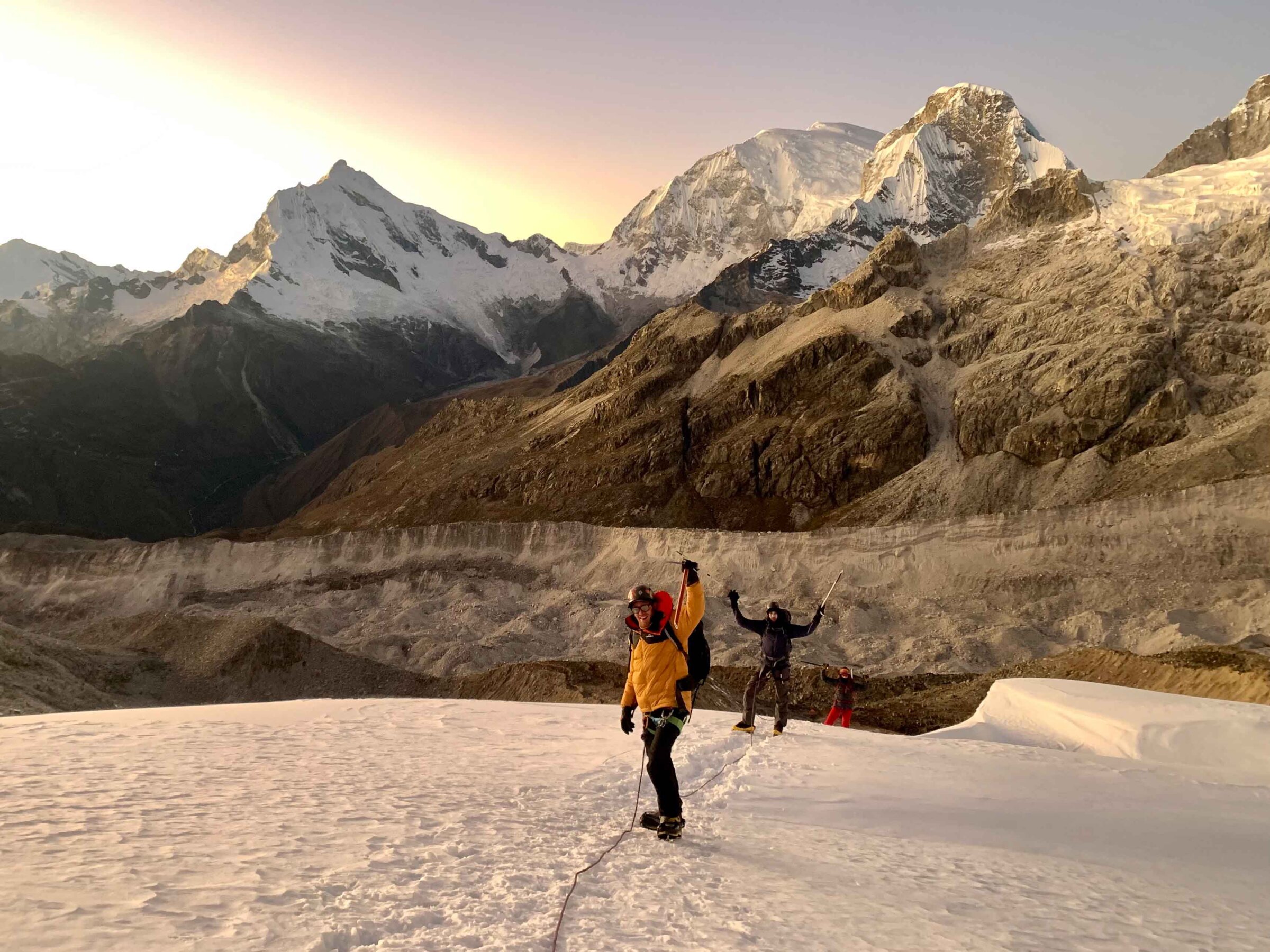The foundation of success in the mountains is education; learn high-altitude mountaineering from our IFMGA guides.
From our founding, we’ve put education at the core of what we do. Our goal with our Climbing Schools is to leave team members with the experience and skills necessary to be a contributing and competent member of a high-altitude mountaineering expedition. It takes skill to climb the tallest mountains on the planet, and this is where you gain those skills.
Key Components of a Climbing School
High Altitude Experience
One of the most important parts of our climbing schools is giving people the opportunity to experience proper altitudes for the first time, while on technical and glaciated terrain. We’ve selected Ecuador and Peru as the venues for our climbing schools because of the easy access to glaciated 5,000m and 6,000m peaks. Our teams have the chance to climb several peaks at altitude, providing repetition and multiple data points for how someone does at altitude. Just like anything in life, it takes practice to become a proficient climber at altitude. These expeditions are designed to give our team members the base line experience necessary to move onto bigger, taller mountains around the planet.
Technical Experience
Building technical experience and developing the fundamental skills of moving on glacier, climbing in a rope team, understanding systems, self arrest skills, walking in crampons, etc, is vital to success on more committing climbs. You don’t want to be learning how to put on your crampons on Everest. Thats why taking a skills course and developing those skills beforehand is necessary. Both of our Climbing Schools are designed to help team members build these skills in an educational environment.
Why Ecuador and Peru?
We choose to run our Climbing Schools in Ecuador and Peru for a few reasons. Namely, the access to glaciated 5,000m and 6,000m peaks. This allows us to give our team members altitude experience they need to climb bigger mountains, while also providing a technical environment to work on skills. This approach leaves every Climb School team member ready to take on their next high-altitude objective.


